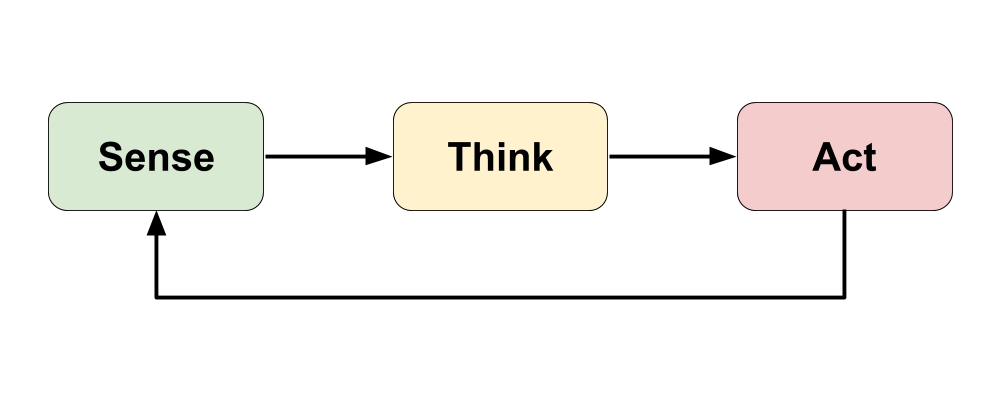1.1 Robotics Research
You'll conduct background research to:
better understand what a robot is
become familiar with examples of different types of robots.
Instructions for both research tasks are listed below.
What is a Robot?
Think about how you might define a "robot" in your own words: What is a robot? How would you decide whether something was a robot or not? Briefly discuss and compare your ideas with other students.
Use these resources to learn more about robots:
WATCH: So, What is a Robot Really? (4 minutes to watch)
READ: What is a Robot? (7 minutes to read)
WATCH: A Brief History of Our Robotic Future (6 minutes to watch)
Answer the following questions based on what you watched and read:
What is the “Sense-Think-Act” cycle, and how is it useful for understanding robots?
Why would a remote-controlled drone not be considered a robot?
How are robots and artificial intelligence (AI) related, and how are they distinct?
What are some possible benefits and risks associated with increased use of robots to automate tasks?

Examples of Robots
Read this article that categorizes different types of robots.
Conduct internet research to find a specific example for three different types of robots. Gather information to summarize the following for each robot example:
What is the robot's name, and what type of robot is it (e.g., consumer, industrial, etc.)? Be sure to include an image of the robot.
What is the robot's purpose (e.g., what tasks does it perform), and what is its context of use (e.g., when and where is it used)?
What benefit or value does the robot provide? (e.g., is it more convenient, is it more efficient or accurate, is it safer, does it perform tasks not possible otherwise, etc.)
SENSE: What physical inputs (sensors, etc.) does the robot have? What data does it gather from its physical environment using these inputs?
THINK: What kind of decisions can the robot make based on the data it gathers from its physical environment?
ACT: What physical outputs (motors, etc.) does the robot have? What actions can it perform in its physical environment using these outputs?
What information sources were used in your research? (include links to sources)
Create a slide presentation to summarize your research findings for each robot example, and briefly present one or more of your examples to the class.
❏ Deliverables
Submit the following:
A document with your answers to the questions based on the robot videos and article
A slide presentation with the research summary of your robot examples
TK
✓- Below Standard
✓ Meets Standard
✓+ Exceeds Standard
Description
Description
Description